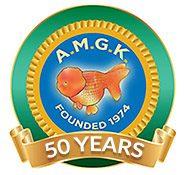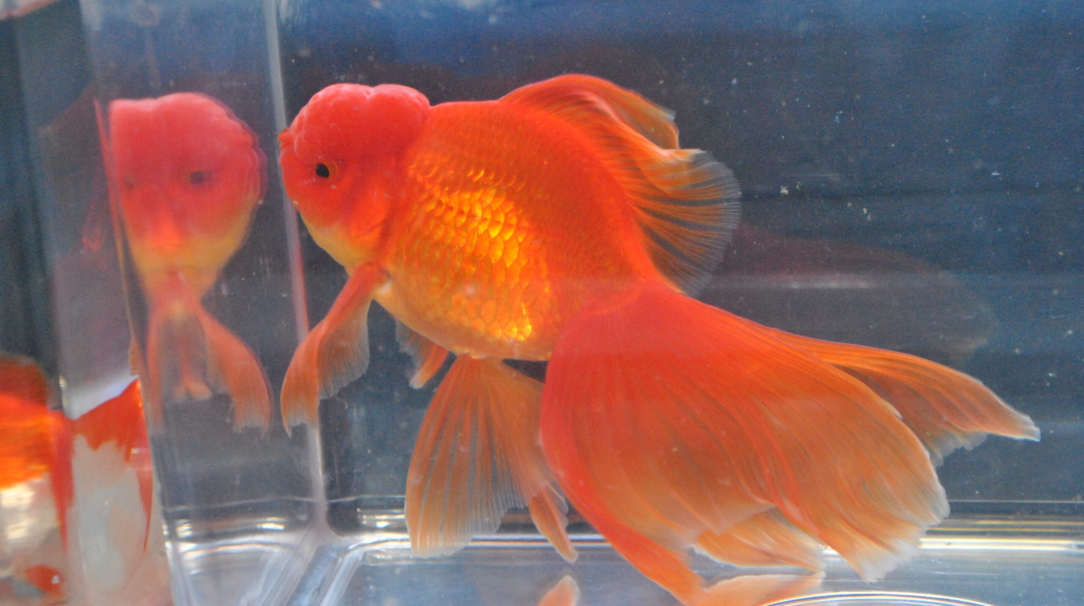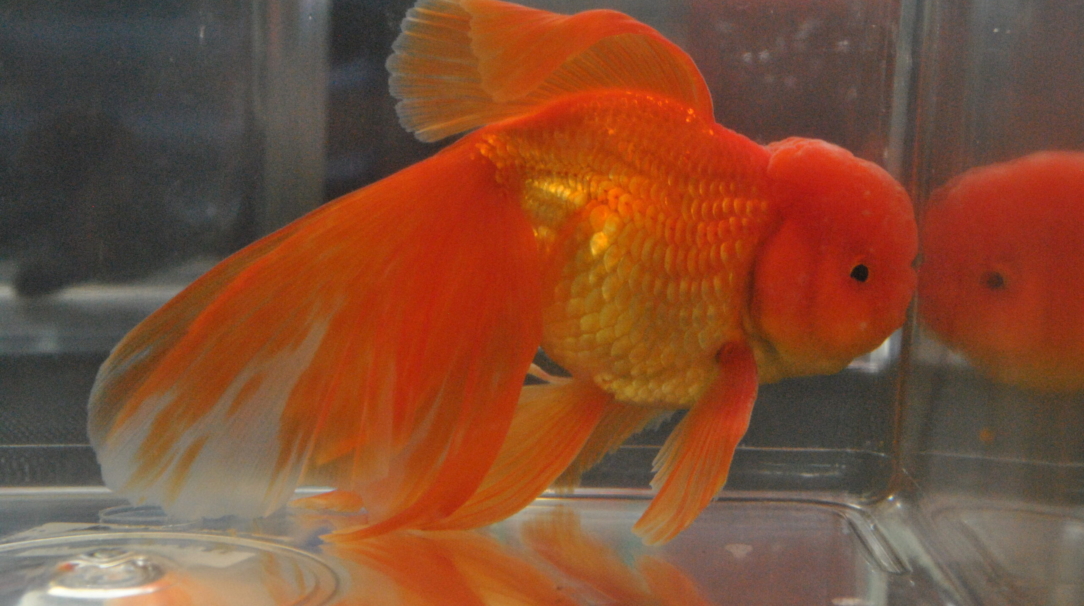Oranda
A good oranda, conforming to the standard, is very rare; the standard formerly called for a forked tail but has been revised to the square-edged tail of the moor and the veiltail. Far Eastern imports have a deeply-forked, thin-lobed tail and frequently have excellent hood development, self-coloured reds having good colour depth. Retaining good colouration and hood growth whilst breeding for the broad tail remains a challenge.
The oranda was for long the only goldfish variety equally fancied by both Western and Far Eastern enthusiasts. In the Far East, fish with the rasberry-like growth covering the entire head are known as tigerheads, whilst the name oranda is reserved for fish with a prominent growth on the top of the head (cranial region) only, giving the appearance of a hood, and with less well developed growths on the cheeks and gills (infra-orbital and opercular regions). In Japan, the calico oranda is called the azumanishiki.
Red cap orandas first appeared around 1590, and tigerheads in 1893











